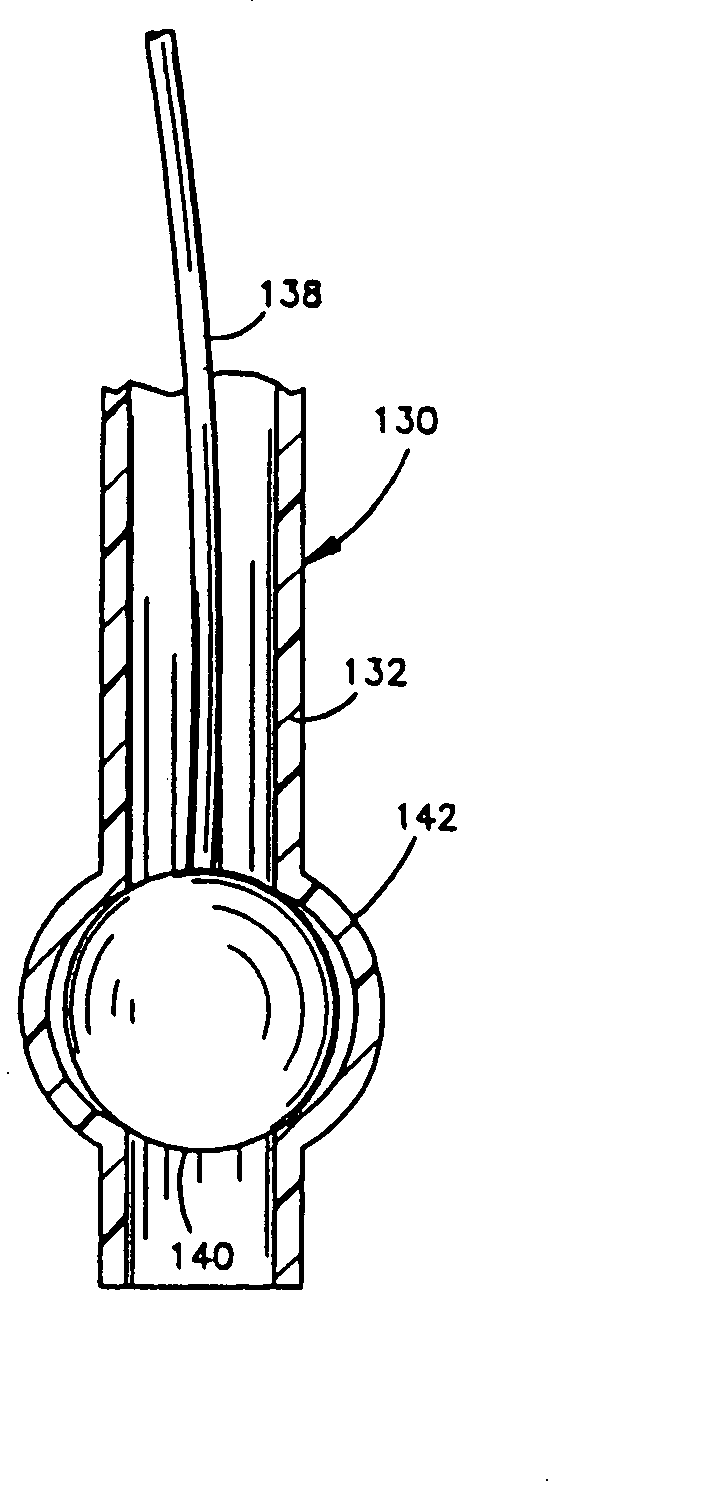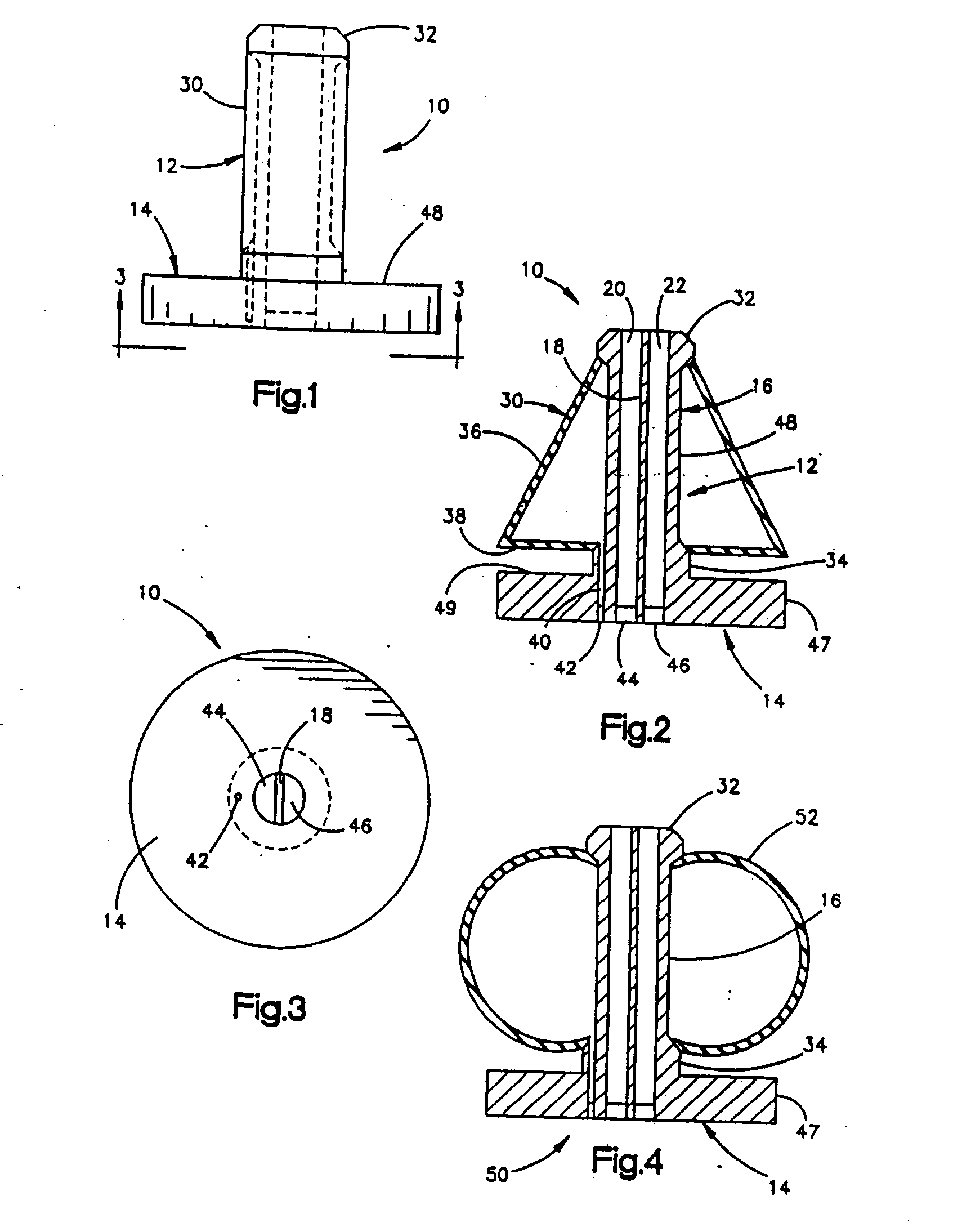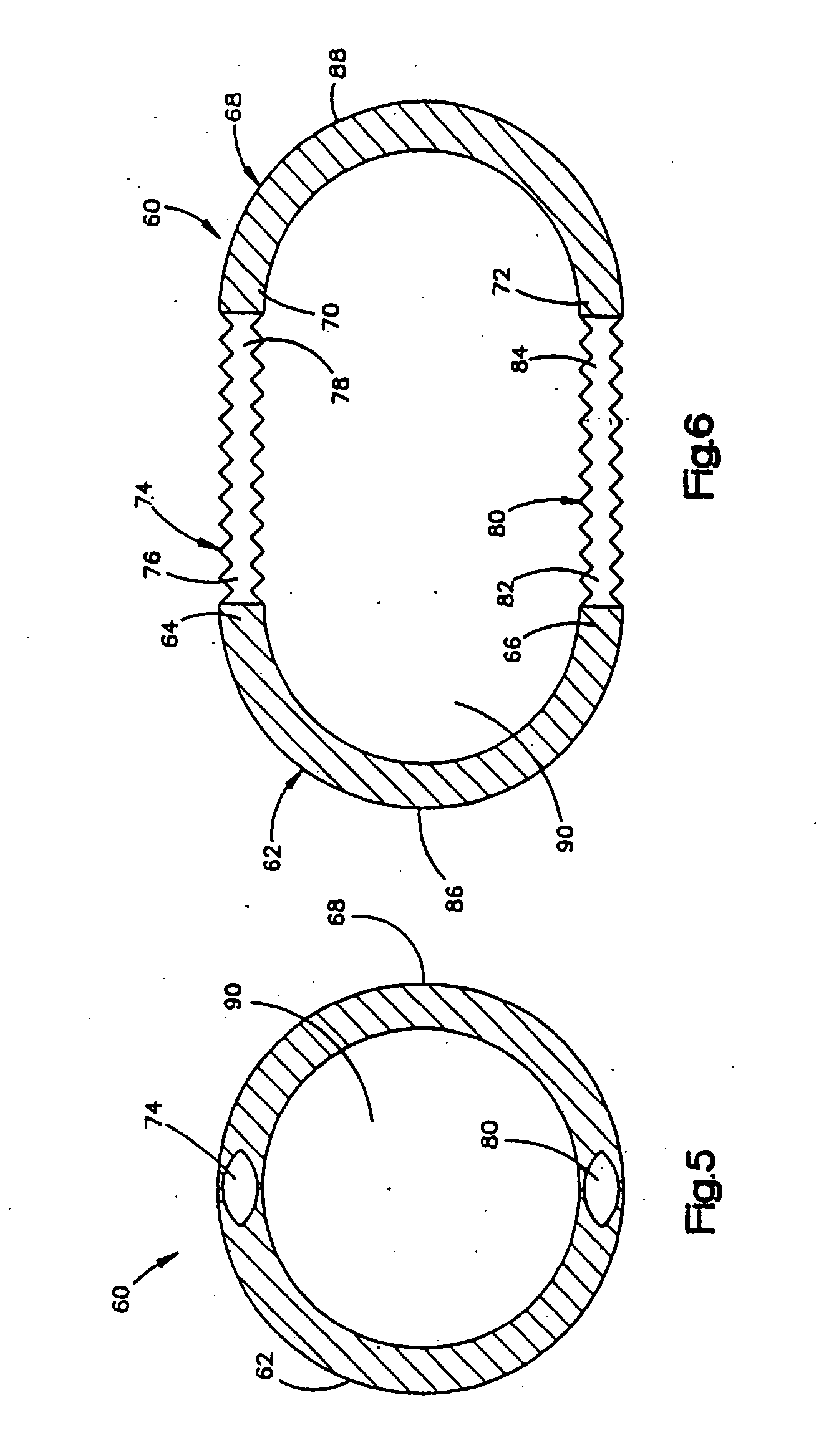Active cannulas
a cannula and active technology, applied in the field of expanding medical devices, can solve the problems of inability to vary the length and width of the intraoperatively, necrosis or tissue death, edema or swollen tissue, etc., and achieve the effect of safe and easily and controllable, safe and appropriate tissue visualization
- Summary
- Abstract
- Description
- Claims
- Application Information
AI Technical Summary
Benefits of technology
Problems solved by technology
Method used
Image
Examples
Embodiment Construction
[0125]FIGS. 1-3 illustrate an arthritis irrigation apparatus 10. The irrigation system 10 includes a cannula 12 having a disc portion 14 and a longitudinally extending cannula body 16. A central wall 18 divides the cannula body 16 into two longitudinally extending lumens 20 and 22.
[0126] An expandable bladder 30 is connected to or formed integrally with the cannula 12 at the distal end 32 and proximal end 34 of the cannula body 16. The expandable bladder 30 includes a longitudinally extending wall portion 36 and a transversely extending wall portion 38. The expandable bladder 30 is supplied with fluid under pressure through a fluid supply port 40 closed by a rubber diaphragm seal 42. The lumens 20 and 22 are closed by similar diaphragm seals 44 and 46, respectively. The cannula body 16 has a recessed portion 48 in which the bladder 36 fits when unexpanded.
[0127] The system 10 is inserted into a pre-made opening until the disc portion 14 engages the skin. Upon the introduction of f...
PUM
 Login to View More
Login to View More Abstract
Description
Claims
Application Information
 Login to View More
Login to View More - R&D
- Intellectual Property
- Life Sciences
- Materials
- Tech Scout
- Unparalleled Data Quality
- Higher Quality Content
- 60% Fewer Hallucinations
Browse by: Latest US Patents, China's latest patents, Technical Efficacy Thesaurus, Application Domain, Technology Topic, Popular Technical Reports.
© 2025 PatSnap. All rights reserved.Legal|Privacy policy|Modern Slavery Act Transparency Statement|Sitemap|About US| Contact US: help@patsnap.com



